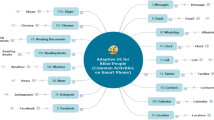Abstract
Designing mobile interfaces for enhanced usability and user experience has become a standard practice in modern-day app development. However, this approach often prioritizes the needs of sighted users, leading to a compromised experience for people who are visually challenged or blind. This study reveals the user experience elements that make it easier for sighted users to accomplish a task while creating barriers for people who rely on screen readers. Using task-based usability tests of six globally popular mobile apps, the study compares the experiences of 12 sighted and 15 visually challenged (VC) users. The results reveal drastic differences in usability and experience between the two groups, highlighting the gaps and experience compromises despite being accessible by norms. The study highlights how designing interfaces for enhanced usability and user experience for sighted users compromises six prominent aspects of usability for people who are visually challenged or blind, leading to productivity challenges and poor user experiences, calling for a more inclusive and accessible approach to mobile app design. The study suggests investigating technological advancements, such as building screen reader capabilities to understand the designer’s intent or creating tools to support the designer in keeping screen reader limitations in mind while designing, to address such issues and provide an equal experience for VC users.
Access this chapter
Tax calculation will be finalised at checkout
Purchases are for personal use only
Similar content being viewed by others
References
Álvarez-Robles, T., Álvarez, F., Orozco, Y., Sandoval-Bringas, J.A.: Analysis of specialized websites in digital libraries: evaluation of UX with blind users. In: Stephanidis, C., et al. (eds.) HCII 2021. LNCS, vol. 13096, pp. 133–146. Springer, Cham (2021). https://doi.org/10.1007/978-3-030-90328-2_9
Al-Razgan, M., et al.: A systematic literature review on the usability of mobile applications for visually impaired users. PeerJ Comput. Sci. 7 (2021). https://doi.org/10.7717/PEERJ-CS.771
Alshayban, A., Ahmed, I., Malek, S.: Accessibility issues in Android apps: state of affairs, sentiments, and ways forward. 1323–1334 (2020). https://doi.org/10.1145/3377811.3380392
dos S. Rosa, J.R., Valentim, N.M.C.: An exploratory study about accessibility, usability and user experience with the visually impaired using mobile applications. In: ACM International Conference Proceeding Series, Article no. 3439998 (2020). https://www.scopus.com/inward/record.uri?eid=2-s2.0-85102882807&doi=10.1145%2f3439961.3439998&partnerID=40&md5=983259e10c8a5c7450cd826ffca4edf5
Aizpurua, A., Arrue, M., Vigo, M.: Uncovering the role of expectations on perceived web accessibility. In: Proceedings of the 15th International ACM SIGACCESS Conference on Computers and Accessibility - ASSETS 2013, pp. 1–2 (2013). https://doi.org/10.1145/2513383.2513411
Stephanidis, C.: Margherita Antona Universal Access in Human-Computer Interaction Methods, Techniques, and Best Practices (2016). http://www.springer.com/series/7409
Busaeed, S., Mehmood, R., Katib, I.: Requirements, Challenges, and Use of Digital Devices and Apps for Blind and Visually Impaired (2022). https://doi.org/10.20944/preprints202207.0068.v1
Rodrigues, A., Nicolau, H., Montague, K., Guerreiro, J., Guerreiro, T.: Open challenges of blind people using smartphones. Int. J. Hum. Comput. Interact. 36(17), 1605–1622 (2020). https://doi.org/10.1080/10447318.2020.1768672
W3Org. Accessibility, Usability, and Inclusion (2018). https://www.w3.org/WAI/fundamentals/accessibility-usability-inclusion/. Accessed 5 May 2022
Alajarmeh, N.: The extent of mobile accessibility coverage in WCAG 2.1: sufficiency of success criteria and appropriateness of relevant conformance levels pertaining to accessibility problems encountered by users who are visually impaired. Univers. Access Inf. Soc. 21(2), 507–532 (2022). https://doi.org/10.1007/s10209-020-00785-w
Power, C., Freire, A., Petrie, H., Swallow, D.: Guidelines are only half of the story. In: Proceedings of the 2012 ACM Annual Conference on Human Factors in Computing Systems - CHI 2012, p. 433 (2012). https://doi.org/10.1145/2207676.2207736
Leuthold, S., Bargas-Avila, J.A., Opwis, K.: Beyond web content accessibility guidelines: design of enhanced text user interfaces for blind internet users. Int. J. Hum.-Comput. Stud. 66, 257–270 (2008). https://doi.org/10.1016/j.ijhcs.2007.10.006
Aizpurua, A., Arrue, M., Vigo, M.: Prejudices, memories, expectations and confidence influence experienced accessibility on the Web. Comput. Hum. Behav. 51, 152–160 (2015). https://doi.org/10.1016/j.chb.2015.04.035
Aizpurua, A., Harper, S., Vigo, M.: Exploring the relationship between web accessibility and user experience. Int. J. Hum. Comput. Stud. 91, 13–23 (2016). https://doi.org/10.1016/j.ijhcs.2016.03.008
Griffin-Shirley, N., et al.: A survey on the use of mobile applications for people who are visually impaired. J. Vis. Impairment Blindness 111, 307–323 (2017). https://doi.org/10.1177/0145482X1711100402
Sauer, J., Sonderegger, A., Schmutz, S.: Usability, user experience and accessibility: towards an integrative model. Ergonomics 63(10), 1207–1220 (2020). https://doi.org/10.1080/00140139.2020.1774080
Yan, S., Ramachandran, P.G.: The current status of accessibility in mobile apps. ACM Trans. Accessible Comput. 12(1), 1–31 (2019). https://doi.org/10.1145/3300176
Rodrigues, A., Montague, K., Nicolau, H., Guerreiro, T.: Getting smartphones to talkback: understanding the smartphone adoption process of blind users. In: ASSETS 2015: The 17th International ACM SIGACCESS Conference of Computers and Accessibility, pp. 23–32 (2015). https://doi.org/10.1145/2700648.2809842
Alnfiai, M.: Evaluating the accessibility and usability of a universal CAPTCHA based on gestures for smartphones. Univ. Access Inf. Soc. 20, 817–831 (2021). https://doi.org/10.1007/s10209-020-00730-x
Milano, P.: “Usable accessibility” to the Web for blind users “Usable Accessibility” to the Web for blind Users (2016). http://ui4all.ics.forth.gr/workshop2004/files/ui4all_proceedings/adjunct/accessibility/109.pdf. Accessed Jan 2014
Zaina, L.A.M., Fortes, R.P.M., Casadei, V., Nozaki, L.S., Paiva, D.M.B.: Preventing accessibility barriers: Guidelines for using user interface design patterns in mobile applications. J. Syst. Softw. 186, 111213 (2022). https://doi.org/10.1016/j.jss.2021.111213
Lee, Y., Lee, J.: A checklist for assessing blind users’ usability of educational smartphone applications. Univers. Access Inf. Soc. 18(2), 343–360 (2019). https://doi.org/10.1007/s10209-017-0585-1
Acknowledgements
Authors acknowledge support received from National Centre for Assistive Health Technology (NCAHT), IIT Delhi in carrying out this work.
Author information
Authors and Affiliations
Corresponding author
Editor information
Editors and Affiliations
Rights and permissions
Copyright information
© 2024 The Author(s), under exclusive license to Springer Nature Switzerland AG
About this paper
Cite this paper
Tanwar, S., Rao, P.V.M. (2024). Inequality in User Experience: Can Mobile User Interfaces that Help Sighted Users Create Barriers for Visually Challenged People?. In: Miesenberger, K., Peňáz, P., Kobayashi, M. (eds) Computers Helping People with Special Needs. ICCHP 2024. Lecture Notes in Computer Science, vol 14750. Springer, Cham. https://doi.org/10.1007/978-3-031-62846-7_3
Download citation
DOI: https://doi.org/10.1007/978-3-031-62846-7_3
Published:
Publisher Name: Springer, Cham
Print ISBN: 978-3-031-62845-0
Online ISBN: 978-3-031-62846-7
eBook Packages: Computer ScienceComputer Science (R0)




